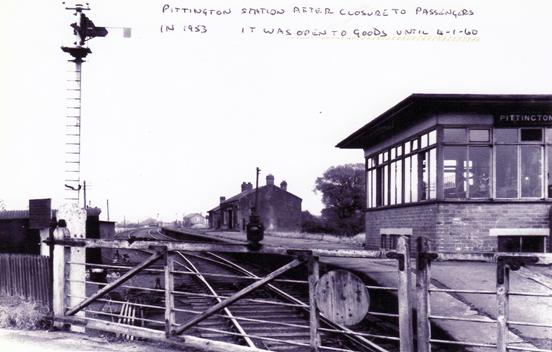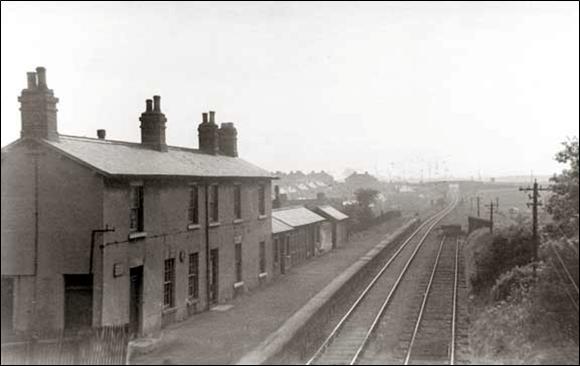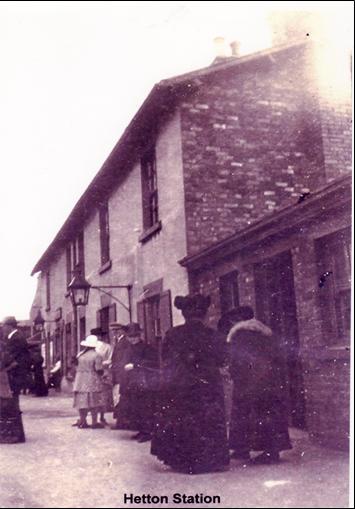(GR 342 466 )
Directions to point A Start / Finish (GR 350 475)
Turn left and travel back along the A182 in the direction of Hetton Centre. After entering the centre of Hetton at the traffic lights locate the bus terminus and return to Hetton Centre to end the walk
(Point A) QRCode or link to information 
Point K The present station on the main line in Durham is not the first station to open for the city for in 1839, the Durham to Sunderland Railway opened with the first station for the city being at Shincliffe, about a kilometre south of the city. The railway ran from Shincliffe via Sherburn House, Pittington, Hetton, Murton and Ryhope before arriving at a station in the East End of Sunderland, a distance of about 15 miles (24 Km). Originally it was intended to have the station at Gilesgate on the east of the city of Durham but this plan fell through and the station at Shincliffe remained until 1893 when it was replaced by a station located at Elvet in the city. Built as a line to carry mineral traffic (particularly coal) it seems that passenger traffic was initially of secondary consideration. Originally passenger carriages were attached to the rear of trains but this was not consistent in the early days. It is likely that with passenger trains the rope was detached from the train when descending a gradient and gravity took over . This fact has been mentioned in accident reports during the 1840s. However, passenger traffic ceased around 1931 and the last special passenger train carrying people to the Big Meeting (Miners’ Gala) close to Elvet, the terminus, occurred in 1953. Goods traffic lasted until January 1960 then the line between Durham (Elvet) and Murton closed. Originally the line was worked by rope haulage with stationary engines located throughout its length and it wasn’t until 1857 that locomotives were first used. At the head of the path where it meets the A182 stood Hetton Station. In 1858 after the application of locomotives trains for Shincliffe left Sunderland at 8.30 a.m., 1.00p.m. and 4. 30 p.m., taking about an hour for the whole journey. The three trains going in the opposite direction left Shincliffe at 6.50 a.m., 10.50 a.m. and 3.00 p.m. Timetable evidence however is sketchy but many of the older residents of Hetton remember going to and from Sunderland on the train. Once the trains used Elvet Station at Durham. This railway also made a connection at Murton with trains travelling from Sunderland to Hartlepool. The station at Hetton regularly handled goods traffic and parcels were taken and deposited at the station from wider afield.
 
| An etching by T H Hair in 1838 shows the standing engine in the building at Pittington together with a 5 carriage passenger train on the Durham to Sunderland railway. The stones in the foreground are to be used as sleepers for the tracks |
12 wagons and 2 passenger carriages on the D&S Railway as it passes by Broomside Colliery. Another etching by T.H.Hair. |
 |
 |
| Pittington Station after closure to passengers in 1953 |
Hetton Station in the 1950s |
 |
 |
| Hetton Station circa 1920 |
Hetton Station Circa 1900 |
|








